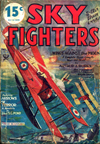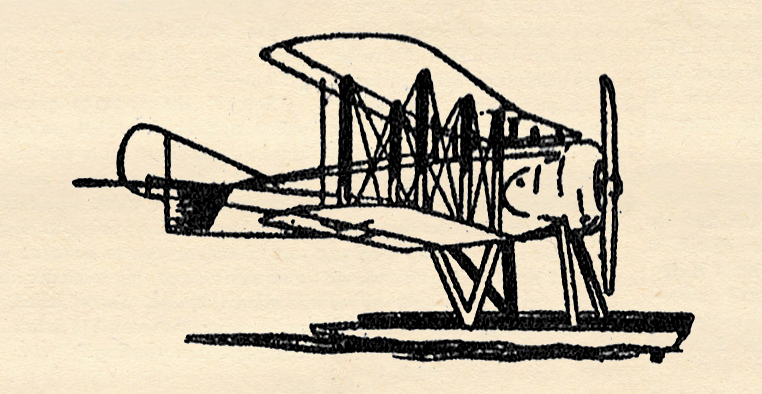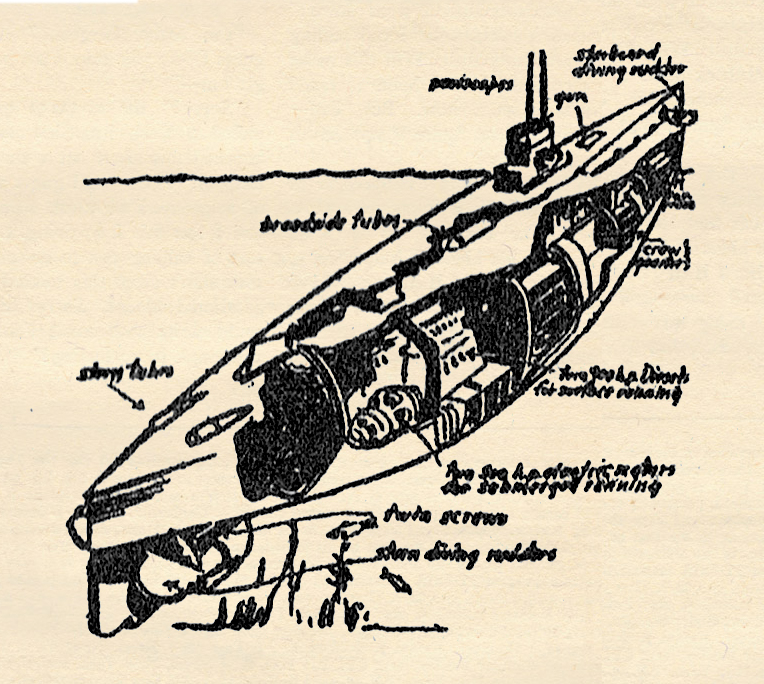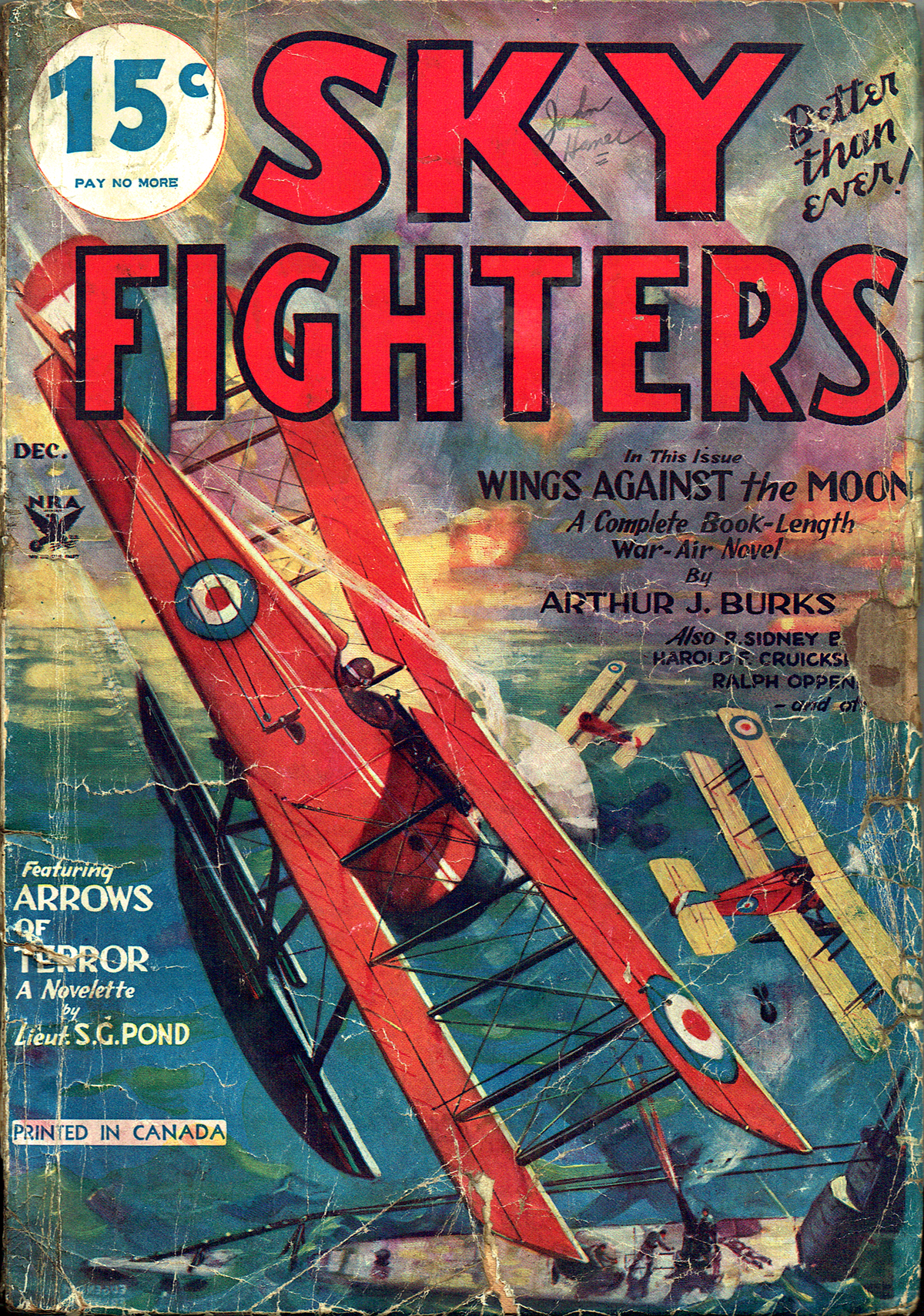“Sky Fighters, December 1933″ by Eugene M. Frandzen
Eugene M. Frandzen painted the covers of Sky Fighters from its first issue in 1932 until he moved on from the pulps in 1939. At this point in the run, the covers were about the planes featured on the cover more than the story depicted. On the December 1933 cover, It’s a Westland N.17 Seaplane hunting for German submarines!
The Ships on the Cover
THE planes on this month’s cover  are all of one type, the Westland N.17 Seaplane. It was a shipboard plane which could be stowed away below decks by folding the wings back along the sides of the fuselage.
are all of one type, the Westland N.17 Seaplane. It was a shipboard plane which could be stowed away below decks by folding the wings back along the sides of the fuselage.
The British had plenty of work for these little sea scouts. The North Sea and other near-by waters were the favorite lurking places for German submarines. To spot a sub with only its periscope above the surface or completely submerged could be efficiently accomplished only by a plane above. Then it was the seaplane pilot’s job to go into action with his bombs or to wireless the position of the enemy to the nearest sub-chaser.

The three Westlands pictured on the cover have caught the German submarine above water. Before it could submerge they have attacked it with machine-gun fire and with bombs. The sub’s commander has no choice but to fight back. Up comes his hidden gun which is below the deck plates in its own water-tight compartment when the sub is submerged.
Twenty seconds is all the time needed before the gun goes into action. A shell whistles by the Westland in the foreground. Machine-gun bullets from the Westlands slash through the air. Two German!! are down. Another leaps to the breach of the gun. Another shell screams at the attackers. Just at this moment the plane directly over the sub has released • bomb. The pilot’s aim is perfect. In less than a second it will hit—a twisted mass of steel plates will sink to the bottom.
Possibly in less than an hour a huge transport with thousands of our troops Aboard will steam over this very spot In the distance one of our doughboys may spot the three Westlands flying low over the water. Ten to one he’ll think, “Now, that’s the kind of a soft job to have. Nothing to do but roost up there and put in a couple of hours doing nothing to help us Yanks win the war.”
The Westland N.17 was powered by a Bentley Rotary motor. It could skim above the water at about 108 miles per hour. It’s landing speed was forty-five miles per hour when fitted with trailing edge flaps. This ship was the answer to the British Admiralty’s demand for a stable, fast single-seater scout which could be used from seaplane carriers as a fighter, sub spotter and light bomber. It came up to all specifications and was in service up to the end of the war.
Just before the battle of Jutland it was a seaplane that warned Admiral Jellicoe that German submarines were directly ahead. Possibly a different outcome to the greatest naval engagement of the World War would have been written in our history books if It had not been for the alertness of those sturdy little planes roaring back and forth across the path of British dreadnaughts.
Seaplanes directed the fire of the battleships shelling the entrance to the Dardanelles, making possible direct hits at a range of 12,000 yards.

For those who care to shed their parachutes and don a diver’s suit we are including a self-explanatory diagram-drawing of a German sub. These undersea engines of destruction accounted for a loss In merchant tonnage to the Allies amounting to nearly 13,000,000 tons.

Sky Fighters, December 1933 by Eugene M. Frandzen
(The Ships on The Cover Page)
Next time, Mr. Frandzen features the Sopwith Camel and Albatross D.V.!




